The 2022 Employment and Salary Survey: Looking for a Return to Normalcy
This past year was a time where many were hoping and dreaming for a new tomorrow—one that would look a lot like the past. A world where masks, social distancing, jabs, and virtual connections to laboratories and conferences could be left to the historical record. Unfortunately, we are still embroiled in these social and economic conundrums. This 2022 Spectroscopy salary and employment survey takes a look at spectroscopists from around the globe and their impressions, reactions, responses to how their work life unfolded in 2021 and their future outlooks.
In our salary and employment survey, we gather information on average salary trends and report on how these trends compare to previous years, referring all the way back to the survey completed in 2001. But unlike some previous Spectroscopy salary surveys, which focused heavily on the numerical details of the salary data (1,2), these past two years we have looked beyond the numbers to focus more on broader trends of workplace satisfaction and career attitudes. We asked about job security and respondents’ outlook for the future working in this challenging and technically complex field. We inquired about what spectroscopy professionals consider their greatest workplace concerns. We asked how many respondents are searching for new opportunities and why—and we looked at the effects caused by still working in a pandemic-stressed workplace environment. We also asked respondents for their outlook for the remainder of 2022. In sum, we looked into multiple factors of the current and future employment environment.
The Overall Picture
As we would expect, this year we found that nearly all professionals working in the field of spectroscopy are more concerned than usual about the security of their jobs and incomes, given the pandemic atmosphere. Nevertheless, respondents are optimistic about the coming year. Nearly 52% of respondents reported that their work environment in 2021 was better than in 2020. Nevertheless, four in ten of respondents 44% (35% last year) indicated that they are interested in seeking a new employment opportunity beyond their current situation while an equal number (44%) say they would not want to leave their current position even if a promising new opportunity were presented.
The Pandemic Effect
As we all know, the pandemic resulted in dramatic changes in working conditions throughout the world. Since the pandemic was officially declared in March of 2020, nearly one in five, or 19% (15% last year) of respondents were either laid off or furloughed; nearly one quarter, or 26.6% (50.5% last year) have had limited or no access to their laboratories. More alarmingly, 38% (34% last year) report they are still struggling to stay positive during the globally impacting pandemic situation. On a positive note, 38% report that they actually enjoy working from home, and 9% are now actually working full-time and exclusively from home.
Nearly all types and sizes of organizations and their operations have been seriously challenged by the pandemic, as facilities have remained either closed or with somewhat restricted access. As a result, corporate and university classes, meetings, and scientific and business conferences have continued in an online or virtual format—a complex, ever-changing, and often mandated requirement in many situations. According to our respondents, the business downturn caused by the pandemic in 2021 has resulted in nearly 15% (60% last year) of organizations downsizing as a direct result of the pandemic lockdown, with another 11% (25% last year) downsizing for reasons not directly related to the pandemic. It is noteworthy that 4% (10% last year) of respondents say their work functions were offshored during 2021.
In spite of the challenges of the shutdown, 85% (77% last year) of respondents feel they are able to effectively complete their work. And even though half, or 54% (50% last year) of respondents claim an increased workload, two-thirds, or 66% (65% last year) are satisfied with their current working conditions, and 37% (45% last year) say they actually enjoy the continued requirement of working from home. We note that 65% now report being fully back at their office or laboratories. This is a notable inversion of last year, when 59% of respondents reported limited or no access to their offices and laboratories.
Is It Time for a Job Change?
Despite the continuous workplace disruptions—or perhaps because of it— our survey results indicate that over half of respondents, or 56% (44% last year) are not interested in seeking a job change. Generally, these respondents want to keep their current positions because of the location of their office and laboratories (16%), or because of their current salary (9%). Other reasons for staying put in current jobs are good work team colleagues (6%), good management (3%), and high competition for job positions (1%). In a vote of job satisfaction, 44% of respondents would not want to leave their current position even if another promising job opportunity were presented. The “great resignation” does not seem to have hit this sector.
On the other hand, four of ten respondents, or 44% (35% last year) would leave their current positions for a new or better opportunity. A full 23% (vs. 26% last year) indicated they were ready for a career change—either major or minor. According to respondents, the main general reasons for seeking new job opportunities are looking for a new challenge (14%) or a higher salary (11%), dissatisfaction with their current employer (4%), workload increases (4%), or job position insecurity (3.5%). Some respondents have expressed that they are seeking new employment for mostly personal reasons. These job trend attitudes are illustrated in Figures 1a–1c.
FIGURE 1a: Breakdown of desire to leave one’s current job. The question was, “I would like to leave my current job if a new suitable opportunity presented itself.”
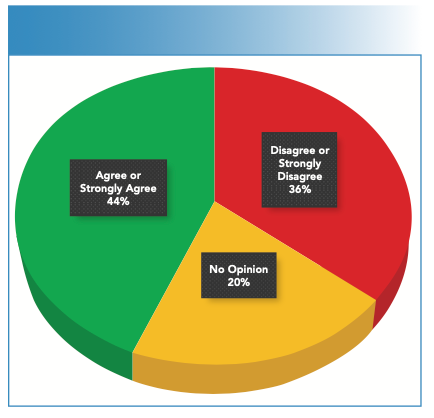
FIGURE 1b: Breakdown of desire to leave one’s current job. The question was, “I do not want to leave my current position even if another opportunity was presented.”
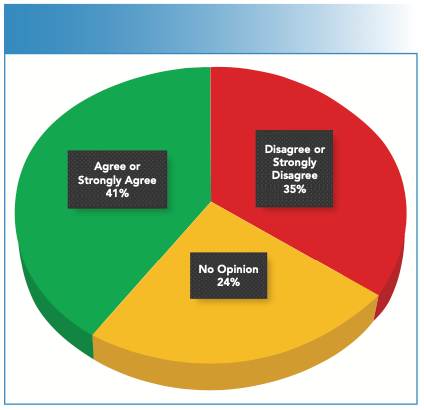
FIGURE 1c: Breakdown of desire to leave one’s current job. The question was, “I am interested in changing careers.”

Of course, thoughts about job change can often be linked to perceptions of both current job security and the perceived strength of the job market. One in seven respondents, or 14% (25% last year) feel their jobs are less secure this year than last year, while one in four, or 25% (24% last year) feel they are more secure. The remaining group (61%) say there has been no change in their job security over the last year. Figure 2 displays the respondent perception of their current job security—which appears to be an essential aspect of long-term job satisfaction.
FIGURE 2: Perception of current job security. The survey question was, “How secure do you feel in your current position compared to last year?”
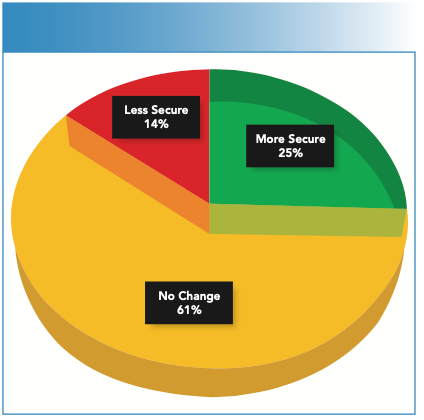
One significant improvement this year is the overall job market outlook. Two- thirds of survey respondents, or 65% (55% last year) now believe that the current employment market for spectroscopists is either good or excellent, and only 5% (6% last year) think it is poor; the remaining 30% still believe the market to be fair or average. One in three, or 35% (15% last year) assess the job market as one where employers are having to compete for good candidates, while the rest feel that there is either moderate (40% vs. 55% last year) or strong (25% vs. 30% last year) competition from candidates who are pursuing open career positions (Figure 3).
FIGURE 3: Strength of the job market for spectroscopists. The survey question was, “If it were necessary for you to change jobs this year, how would you assess the job market?”
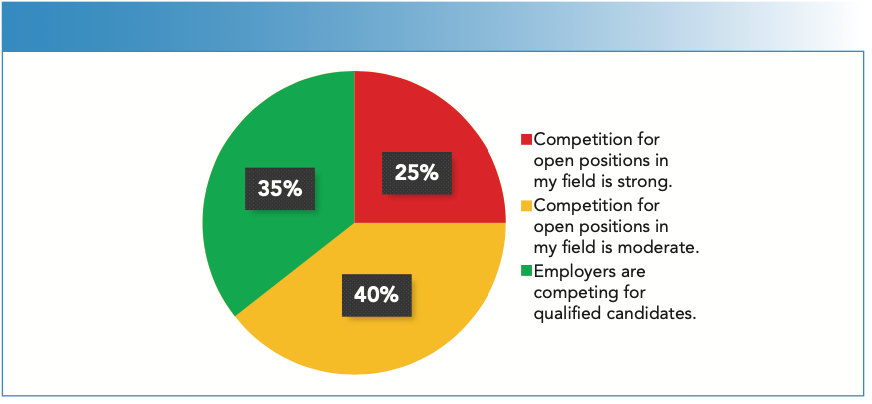
What Factors Are Most Important in a Job?
The vast majority, or 94% (95% last year) of respondents say that salary and bonus structure is the most important factor in their jobs. The survey results indicated that the next most important factors (in rank order) were work–life balance, at 90% (87% last year); the work team, at 89% (88% last year); job security, at 87% (93% last year); a tolerant workplace, at 84% (82% last year); the quality of equipment and laboratory space, at 84% (85% last year); intellectual challenge, at 83% (88% last year), the importance of one’s work, at 83% (87% last year); health insurance (82%), and retirement benefits, at 79% (82% last year). The factors ranking the lowest in importance for job satisfaction were maternity or paternity leave, at 22% (27% last year)—not important to an older demographic—the prestige of the organization, at 39% (39% last year), the ability to work from home, at 40% (48% last year)—not really a competitive factor in the past two years when so many people were working from home— and continued training and education 68% (62% last year).
Salary and Bonus Results for 2021
For 2022, 59% (37% last year) of respondents received raises, so correspondingly 41% did not. This is a positive development; last year only 37% received any pay increase). It was noted that 6% (13% last year) experienced a decrease in pay over this past year (Figure 4). In our 2020 survey (2) we found that 20% of respondents did not receive a raise, but for that year we did not record any salary cuts for full-time professionals.
FIGURE 4: Overall change in salary during this past year. The question was, “What was the overall change in your salary during this past year?”
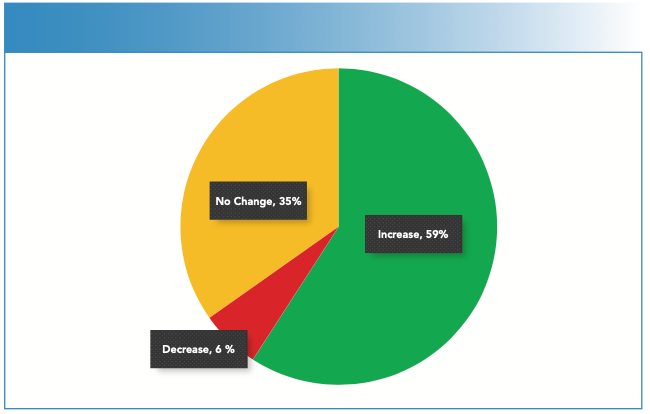
Our questions about pay scales indicated that one in sixteen, or 6% (5% last year) are very satisfied with their pay and feel their pay is at the high-end of the market value for their jobs. Nearly one-third, or 39% (35% last year) feel they are paid fairly. However, a full 61% (65% last year), still feel that they are paid at the lower end of the scale, including almost one-third (29%) who report they are paid below market value.
For this year’s survey, we recorded salaries between $17,000 and $220,000 USD ($15,000 and $250,000 USD last year). The reported mean and median annual salaries for all respondents were $99,739 and $94,000, respectively, indicating the reported salaries are higher for this year’s group of respondents than those reported over the past few years. We note that there was a larger percentage of managers in this year’s survey, as well as a lesser percentage of students and postdoctoral researchers than in previous years. In fact a full 45% of respondents reported incomes of $100,000 USD or more. Thus, there was reported a 13.3% (1.8% last year) increase in average salary. Table I displays the annual average salary trend since 2001 for all respondents (see also Figure 5). For vacation or paid time off (PTO) use during this past year, we noted that only 44% of respondents used over half of their allotted vacation during 2021. Do our respondents love their jobs too much to take all their vacation time, or are the work pressures too great? We have no answer for that.
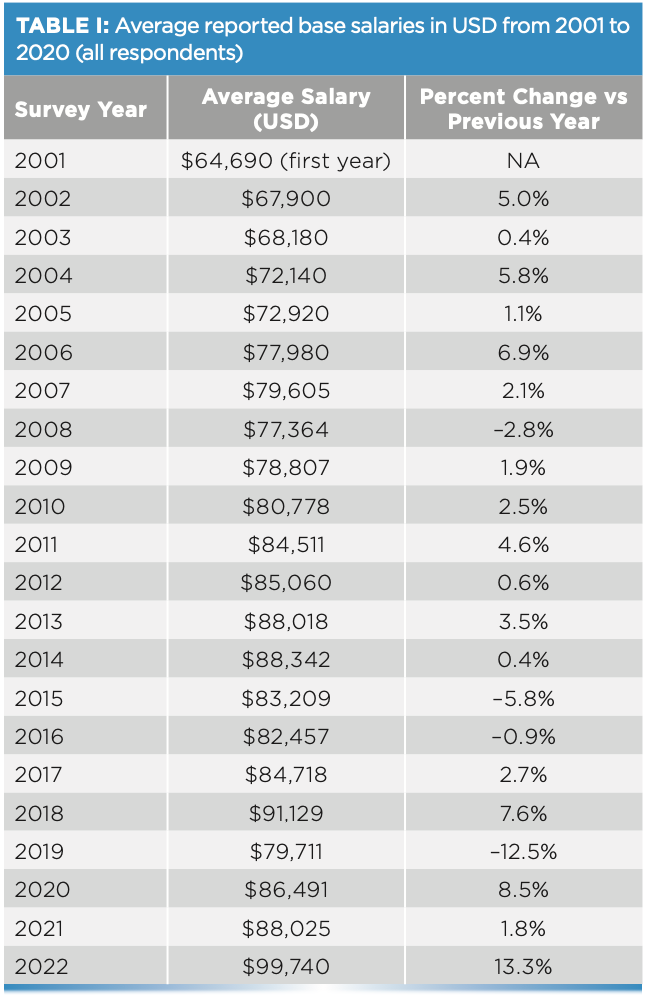
FIGURE 5: Reported average salaries for spectroscopy science professionals from 2001 through 2022 surveys (in $USD).

Although the reported average salaries were higher this year, the average bonuses disclosed for the 2022 survey were somewhat lower for this year compared to those in recent years. Nearly one-half, or 47% of respondents, reported receiv- ing an annual bonus (the same as last year). The bonus amounts for our 2022 survey ranged from $100 to $52,000. The mean and median bonus values for all respondents receiving bonuses were $9,680 and $5,000 USD ($19,228 and $11,685 last year), respectively, as compared to $14,121 and $11,000, respectively in the 2020 survey report.
New Hire and Job Candidate Skill Set Assessments
This year, we asked respondents several questions regarding the perceived knowledge and skill sets of recent hires. Four percent of respondents felt that new hires had exceptional knowledge and skills; 29% thought they had very good skills; 47% said they had adequate knowledge and skills; and 20% felt they exhibited poor skill sets.
We also asked about the skills sets of the overall pools of candidates available for new hires. Three percent of the candidates in the pool were rated as excellent, 40% were rated as good, 38% as adequate, and 19% as poor. The respondents reported that the skill sets lacking in candidates seeking employment included the major hard skill categories of fundamental or basic science knowledge, laboratory experience, instrumentation troubleshooting and data analysis, materials handling knowledge, problem solving ability, technical computing, and technical writing. Soft skill complaints were for lack of people skills, little patience, poor multitasking capability, limited creativity, low flexibility, unwillingness to travel, inability to work solo, lack of humility, poor project management, and low basic work ethic.
The Question of Discrimination in the Workplace
Of all respondents, 19% feel they have been discriminated against at their place of employment. Thus, 81% reported they are not discriminated against or feel they are not in a group that is likely to be discriminated against. The main issues named for those indicating discrimination, in rank order, were age (9.7%), education level (4.4%), gender (3.5%), nationality (2.6%), race (1.8%), and religion (<1%) or pregnancy leave (<1%). Table II illustrates these results.
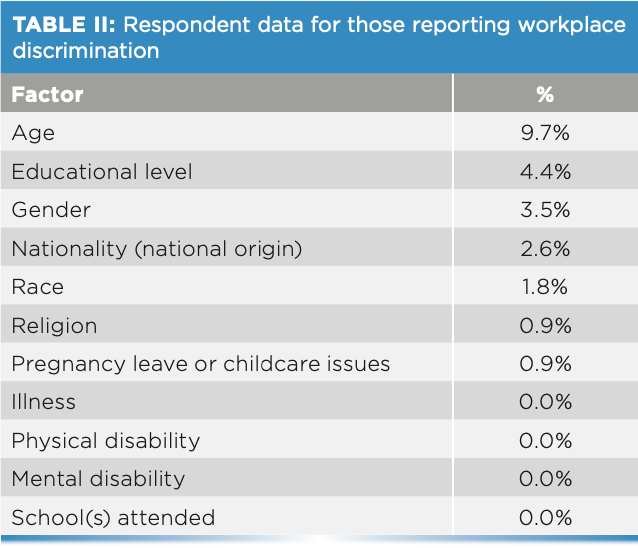
The respondents to the survey described how discrimination was outwardly demonstrated in their work situations. In rank order, the results of manifest discrimination included unequal pay for equal work (6%), lack of promotions (4.4%), fewer growth opportunities (4.4%), being passed over for expected raises and bonuses (3.5%), having their opinions ignored (3.5%), and not being hired when interviewed for job (1.8%).
Of all employees, only 7% have ever formally reported or lodged a complaint for discrimination at their place of employment. The reasons given for not filing a formal complaint (in rank order) included the feeling that it would not help the situation (15%); that it was not serious enough (9%); that the respondent had resigned and moved on (9%); or that the respondent was afraid of reprisals from management, including loss of job (7%). Other important factors for not reporting discrimination at work included a sense of shame (2%), and that a lawsuit was too expensive or too problematic (2%). One percent of respondents felt they would not be believed; that they did not know they could formally complain; and that they felt it would jeopardize future opportunities if they complained.
Of those that have gone through a formal complaint process, a range of results were reported. One quarter (25%) of those that formally complained felt that they were treated as the problem and suffered reprisals. Over one-third (38%) reported there was some action was taken, but it was insufficient. One quarter (25%) reported that appropriate action was taken, and the situation had improved. Another 12% reported a different outcome than those reported above.
Respondent Profile
Of the spectroscopy professionals from around the world that responded to this year’s survey, which was fielded in December 2021 and January 2022, the respondents were 73% male (67% last year) and 27% female (33% last year). Respondents were from industry (55% vs. 59% last year), academic institutions (24% vs. 23% last year), government or nationally funded laboratories (13% vs. 7% last year), the military (0% vs. 2% last year), and from other types of organizations, such as private laboratories, hospitals, and medical facilities (8% vs. 9.4% last year).
The job titles of respondents, in order of occurrence, included principal or senior scientist, at 24% (27% last year), manager, at 22% (14.8% last year), scientist or associate, at 19% (17.6% last year), director, at 12% (7.4% last year), associate or assistant professor, at 4.6% (3.7% last year), technician, at 3.6% (5.6% last year), full professor, at 3.6% (8.3% last year), CEO, CTO, or president at 2.7 % (4.6% last year), laboratory assistant, at 1% (1.9% last year), and other, at 7.3% (8.3% last year). Note that 91% (87% last year) of respondents are full-time employees, while 2% (5% last year) are part-time employees, and nearly 1% (2% last year) are unemployed. Most respondents have a significant number of years of experience with spectroscopic methods: 57.4% have more than 20 years of spectroscopy experience (Table III and Figure 6). As a comparison, the number of years respondents have been with their current organization is shown in Figure 7.
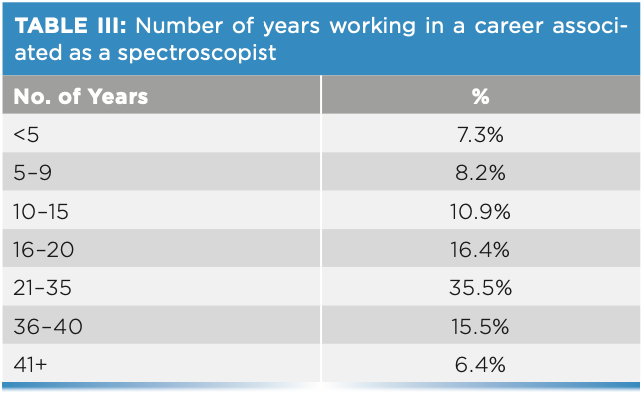
FIGURE 6: Number of years as a spectroscopist. The question was, “For how many years have you been working in a career connected with the spectroscopy field?”
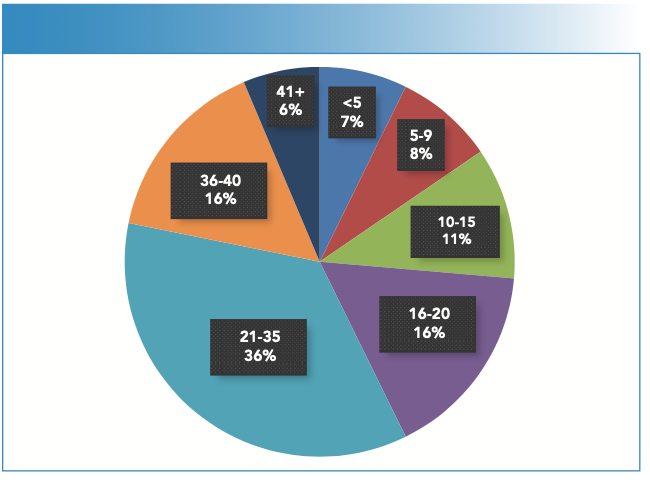
FIGURE 7: Number of years with current organization. The question was, “For how many years have you been at your current company/organization?”
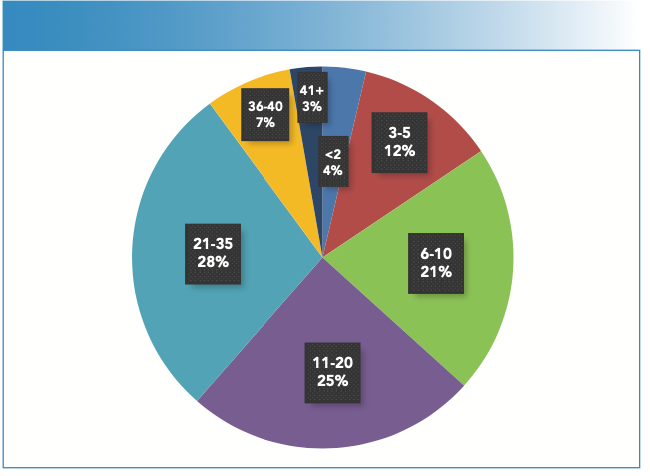
Summary
Spectroscopy professionals across all fields working in 2021 through early 2022 have experienced unprecedented challenges and changes during this continued pandemic year. Among our respondents, 6% experienced a pay cut this year—most likely a result of Covid-19 shutdown issues—and 19% were either laid off or furloughed. Almost two-thirds, 65%, report being fully back at their office or laboratories, and 38% (34% last year) say they are struggling to stay positive during this situation. In spite of all that, a full 85% (77% last year) of respondents feel they are able to complete their work despite the unusual challenges of this year, and 37% actually enjoy working from home.
Of course, the ongoing concerns related to any workplace remain, pandemic or not. We found that the greatest workplace concerns of professionals in the spectroscopy field are salary and bonus structure, work–life balance, working colleagues and associates, job security, a tolerant workplace, the quality of equipment and laboratory space, and the job’s intellectual challenge.
Two-thirds, or 66% (65% last year) of spectroscopists reported they are satisfied with their current working conditions—even though 54% of respondents claim an increased workload. And 44% of our respondents indicate they are interested in seeking a better employment op- portunity beyond their current situation.
We noted that over half of respondents, or 59% (37% last year) received raises, while the remaining 41% did not—and 6% (13% last year) experienced a decrease in pay over this past year. Nearly two-thirds (61%) feel that they are either paid at the low end of the scale or are paid below market value. The mean and median annual salaries for the 2022 survey are much higher than those in the recent past, with an increase in those receiving raises and in the average reported salary for this year vs. the past three survey years (2019–2021 [1–3]).
All in all, 2022 will be an economic enigma as we see supply shortages and higher wages with some business sectors suffering and others booming. This past year remained an extremely challenging and confusing year. In spite of it all, professionals working in spectroscopy continue to remain positive, and determined to apply themselves and their skill sets to improve and develop new products, monitor the environment, delve into important health research, and advance the broad world of developmental and analytical chemistry.
References
(1) J. Workman, Jr., Spectroscopy 34(3), 26–34 (2019).
(2) J. Workman, Jr., Spectroscopy 35(3), 39–50 (2020).
(3) J. Workman, Jr., Spectroscopy 36(3), 44–48 (2021).
Jerome Workman, Jr. is the Senior Technical Editor for Spectroscopy. Direct correspondence about this article to jworkman@mjhlifesciences.com ●

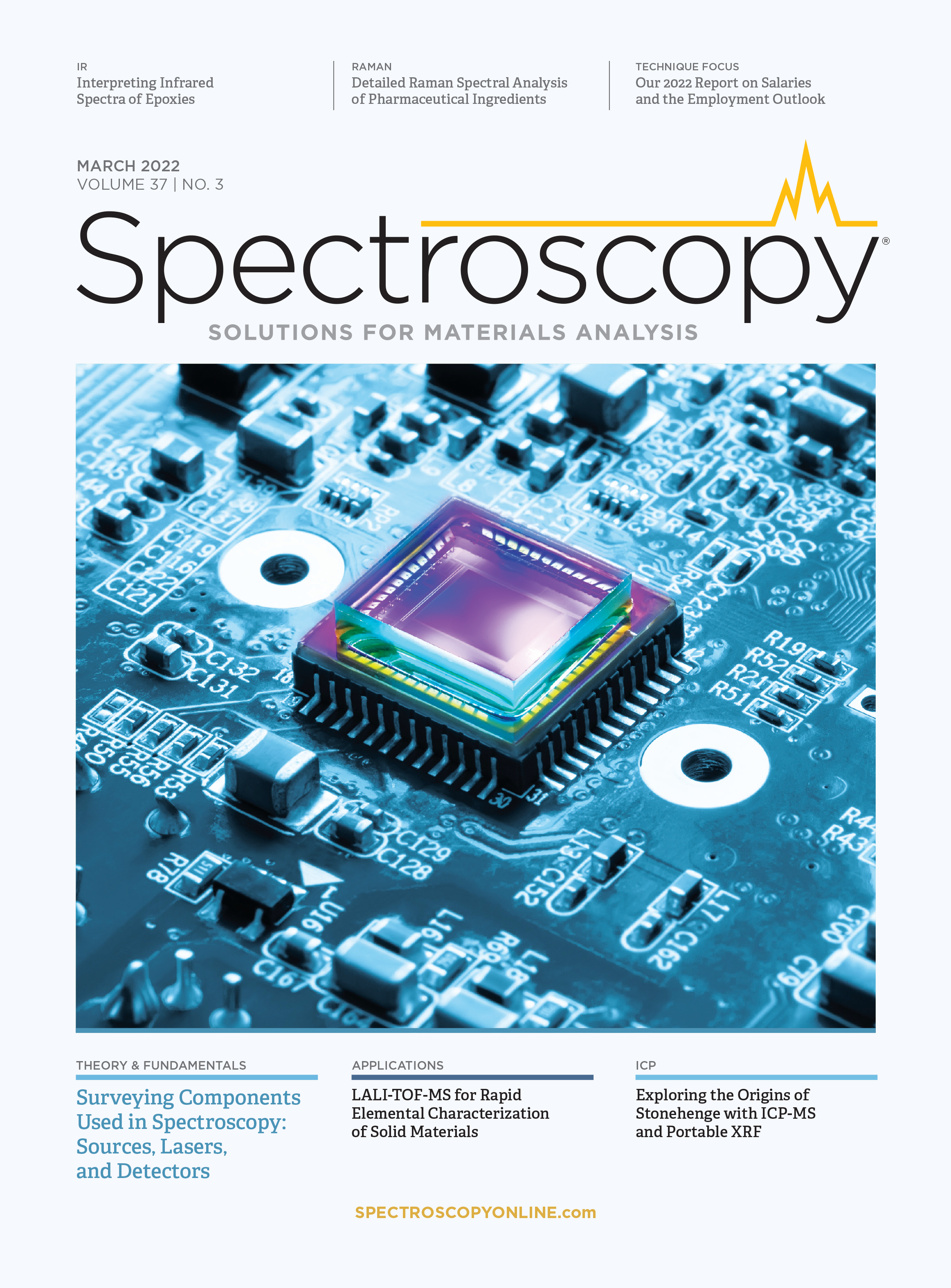
Trends in Infrared Spectroscopic Imaging
September 13th 2013An interview with Rohit Bhargava, winner of the 2013 Craver Award. This interview is part of the 2013 podcast series presented in collaboration with the Federation of Analytical Chemistry and Spectroscopy Societies (FACSS), in connection with SciX 2013, the federation?s North American conference.
Staying Updated with Spectroscopic Techniques: How Lead Investigators Adapt to a Changing Industry
June 6th 2024Spectroscopy is at the forefront of many changes happening across many industries. Here, three lead investigators comment on how they stay updated with the latest innovations and developments.
Advancing Agriculture for Future Generations: The Impact of Spectroscopy on an Important Field
February 1st 2024Welcome to our Advancing Agriculture for Future Generations content series! Begin your exploration by checking out a compilation of our articles that spotlight how spectroscopy is revolutionizing the agriculture industry.